As water challenges intensify globally, venture capital’s role in scaling breakthrough solutions becomes increasingly critical. Craft Ventures, with its $1.32 billion in fresh capital and track record of backing transformative companies, presents an intriguing opportunity for water entrepreneurs. While not traditionally focused on water investments, their approach to technology scaling, founder support, and market disruption offers valuable lessons for the water sector. This deep dive explores how Craft’s investment philosophy and operational expertise could potentially intersect with water innovation, offering insights for both entrepreneurs and impact investors navigating this essential space.
Craft Ventures is part of my Ultimate Water Investor Database, check it out!
Investor Name: Craft Ventures
Investor Type: VC
Latest Fund Size: $1320 Million
Dry Powder Available: Yes
Typical Ticket Size: <$250k
Investment Themes:
Investment History: $0 spent over 2 deals
Often Invests Along: Mazarine Ventures
Already Invested In: SimpleLab,
Leads or Follows: Lead
Board Seat Appetite: Moderate
Key People: David Sacks, Brian Murray, Mark Woolway, Sky Dayton, Bill Lee
The Craft Approach: Lessons for Water Innovation

Craft Ventures’ investment philosophy offers compelling lessons for water technology innovation, particularly in how disruptive solutions can reshape an established industry. The fund’s emphasis on scalable business models aligns perfectly with water’s inherent challenges – the need for solutions that can work across diverse geographic and regulatory landscapes while maintaining cost-effectiveness.
A key aspect of Craft’s approach is their focus on transformative potential rather than incremental improvements. In the water sector, this translates to backing technologies that fundamentally reimagine treatment processes, monitoring systems, or distribution methods. For instance, rather than marginally improving existing filtration systems, Craft’s philosophy would favor solutions that completely revolutionize how we think about water purification.
The fund’s operational expertise particularly resonates with water technology ventures’ needs. Water innovations often face complex regulatory environments, lengthy sales cycles, and multiple stakeholder requirements. Craft’s hands-on approach to supporting portfolio companies could help navigate these challenges while maintaining rapid growth trajectories. Read more about accelerating water innovation growth.
Craft’s emphasis on market disruption through software and data analytics presents an interesting parallel for water technology ventures. While traditional water solutions often focus on hardware and infrastructure, the future lies in smart systems that optimize resource usage, predict maintenance needs, and enable data-driven decision-making. This intersection of digital capabilities with physical infrastructure creates opportunities for truly transformative solutions.
The fund’s track record in scaling businesses offers valuable insights for water entrepreneurs. Rather than pursuing isolated technological achievements, successful water ventures must build sustainable business models that can attract both customers and follow-on investment. This means developing solutions that not only solve technical challenges but also create clear value propositions for utilities, industries, and end-users.
Craft’s approach to market timing and opportunity sizing is particularly relevant. Water technology ventures must similarly identify the precise moment when their innovations align with market readiness, regulatory frameworks, and customer demand. This requires deep market understanding and the ability to pivot strategies while maintaining core technological advantages.
Most importantly, Craft’s philosophy emphasizes the power of network effects – something often overlooked in water technology. While water solutions typically focus on localized problems, the most successful ventures will be those that can create platforms and ecosystems, enabling knowledge sharing and rapid scaling across markets.
Capital Deployment Strategy: What Water Entrepreneurs Should Know

Craft Ventures’ capital deployment approach offers unique opportunities for water technology companies seeking substantial funding for transformative solutions. With a $1.3 billion fund size, the firm maintains specific investment parameters that water entrepreneurs must understand to align their ventures with Craft’s strategic framework.
The fund typically writes initial checks between $3-15 million for Series A investments, with capacity for significant follow-on funding in later rounds. This positions Craft as an ideal partner for water technology companies that have achieved product-market fit and are ready to scale their operations. The sweet spot centers on companies generating $1-5 million in annual recurring revenue, demonstrating clear unit economics and a path to profitability.
For water entrepreneurs, Craft’s stage focus holds particular significance. The firm seeks businesses that have moved beyond the technical validation phase and can showcase commercial traction. This means having paying customers, proven technology performance data, and initial market validation – critical elements in the water sector where long sales cycles and extensive piloting requirements are common.
Craft’s deployment strategy emphasizes capital efficiency and sustainable growth. Water technology companies must demonstrate how additional capital will accelerate revenue growth through market expansion, team building, or product development. The firm looks for clear evidence that funding will drive specific milestones that increase enterprise value.
Perhaps most importantly for water entrepreneurs, Craft evaluates opportunities through the lens of market transformation potential. The firm actively seeks companies that can fundamentally reshape industry dynamics through innovative business models or technological breakthroughs. For water technology ventures, this means articulating how their solutions address critical challenges like water scarcity, quality monitoring, or infrastructure modernization in ways that create new market paradigms.
The implications for water entrepreneurs are clear: success in attracting Craft’s capital requires more than just innovative technology. Ventures must package their opportunity within a compelling narrative of market disruption, backed by solid commercial validation and clear scaling mechanics. As explored in “How to Make Water More Attractive Than the Apple and Samsungs of This World”, water technology companies need to position themselves as transformative market leaders rather than incremental solution providers.
Craft’s investment thesis also emphasizes founder quality and team capabilities. Water entrepreneurs should demonstrate deep domain expertise coupled with the ability to execute on an ambitious vision. The firm values leaders who understand both the technical and commercial complexities of the water sector while maintaining the agility to adapt to changing market conditions.
Building Water Tech Champions: The Craft Playbook
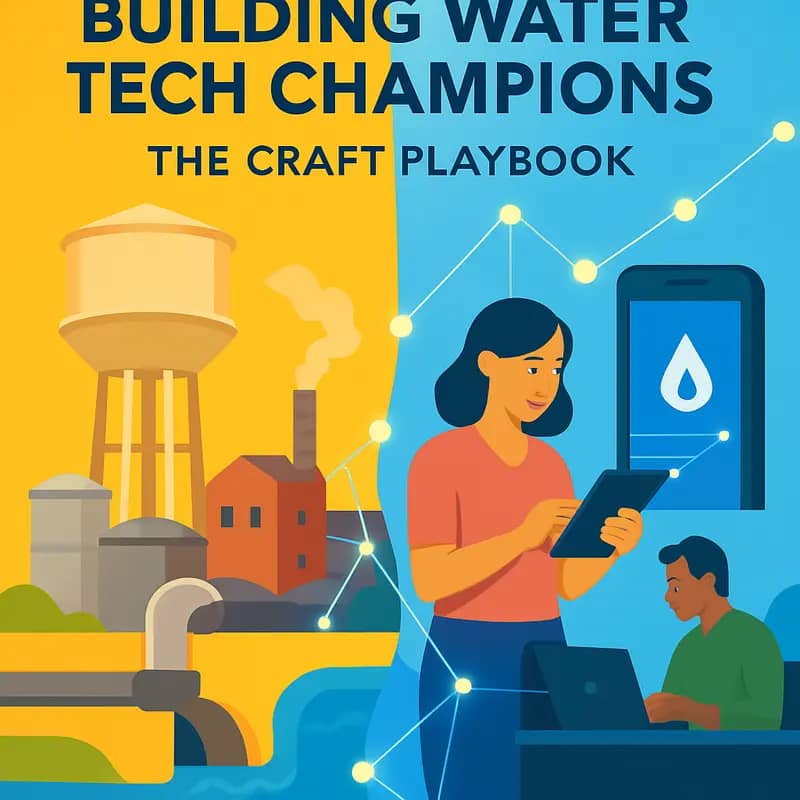
Venture capital support extends far beyond simply writing checks. For water technology entrepreneurs seeking to scale their innovations, understanding Craft’s comprehensive approach to company building offers valuable lessons in accelerating growth while managing sector-specific challenges.
At the core of Craft’s playbook lies their emphasis on founder empowerment through strategic guidance. Rather than taking an overly prescriptive approach, they focus on helping entrepreneurs develop robust decision-making frameworks. This proves especially crucial in the water sector, where founders must navigate complex stakeholder environments spanning utilities, regulators, and end-users.
The fund’s approach to technical validation stands out as particularly relevant for water innovations. They advocate for rigorous piloting protocols that balance the need for comprehensive performance data with the imperative to maintain commercialization momentum. This methodology helps companies avoid the common pitfall of getting stuck in endless pilot cycles while ensuring their solutions meet the industry’s exacting standards.
Craft places significant emphasis on building scalable go-to-market strategies. For water technology companies, this often means developing flexible business models that can adapt to varying customer segments – from municipal utilities to industrial users. Their framework helps founders identify and prioritize the most promising market entry points while building the operational infrastructure needed to support rapid growth.
The fund’s talent development strategy deserves special attention. They help portfolio companies build diverse teams that blend water industry expertise with technological innovation capabilities. This hybrid approach proves especially valuable in bridging the gap between traditional water sector practices and cutting-edge solutions.
Perhaps most crucially, Craft emphasizes the importance of financial discipline alongside growth. They guide companies in developing sustainable unit economics early, recognizing that the water sector’s long sales cycles and capital-intensive nature require careful cash management. This includes strategies for leveraging non-dilutive funding sources like grants and strategic partnerships.
Their ecosystem approach to value creation connects portfolio companies with potential customers, partners, and fellow entrepreneurs. In the water sector, where relationship networks often determine success, this interconnected community provides crucial pathways to market validation and growth opportunities.
Entrepreneurs can adapt these strategies by focusing on building robust validation processes, developing flexible business models, and cultivating strong industry relationships. Success in water technology requires more than just innovative solutions – it demands a comprehensive approach to company building that addresses the sector’s unique challenges while capitalizing on its opportunities.
Strategic Partnerships and Co-Investment Opportunities
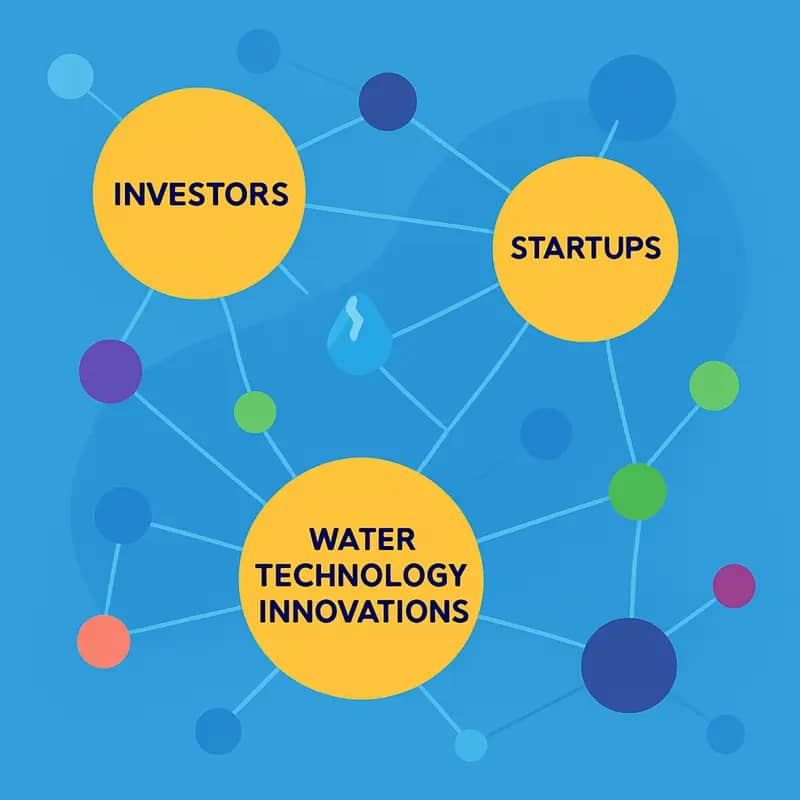
For water entrepreneurs seeking to maximize their impact and accelerate growth, Craft Ventures’ extensive network presents compelling partnership and co-investment opportunities. The key lies in understanding how to position your venture strategically within this ecosystem.
Craft’s approach to partnerships centers on creating synergistic relationships between portfolio companies and strategic partners. Water entrepreneurs can leverage this by identifying complementary technologies, market access opportunities, and shared customer segments within Craft’s network. The fund’s focus on enterprise software and deep tech creates natural alignment points for water technology companies developing digital solutions, advanced materials, or AI-driven applications.
To effectively tap into co-investment opportunities, water entrepreneurs should prioritize three key areas: technology validation, market traction, and scalability potential. Craft typically looks for companies that can demonstrate clear technical differentiation and early market validation. This means having pilot projects or initial customers that can verify both the technology’s effectiveness and its commercial viability.
The fund’s co-investment strategy often involves collaboration with sector-specific investors and strategic corporate partners. For water entrepreneurs, this translates into opportunities to secure not just capital, but also domain expertise and market access. By aligning with Craft’s investment thesis around scalable solutions, entrepreneurs can position themselves to attract co-investment from both traditional VCs and strategic corporate investors.
Successful positioning within Craft’s network requires entrepreneurs to demonstrate how their solution addresses multiple stakeholder needs. This might involve showcasing how a water treatment technology simultaneously reduces operational costs, improves environmental compliance, and generates valuable data insights. The ability to articulate such multi-faceted value propositions significantly enhances co-investment potential.
Entrepreneurs should also consider Craft’s preference for companies that can leverage network effects. In the water sector, this might manifest through data platforms that become more valuable as they aggregate more users, or treatment technologies that benefit from distributed implementation and shared learning across installations.
The most successful partnerships within Craft’s ecosystem often emerge when entrepreneurs can demonstrate clear alignment with the fund’s core thesis while bringing unique capabilities in the water sector. This combination of scalable technology and sector-specific expertise creates compelling opportunities for co-investment and long-term value creation.
The Technical Edge
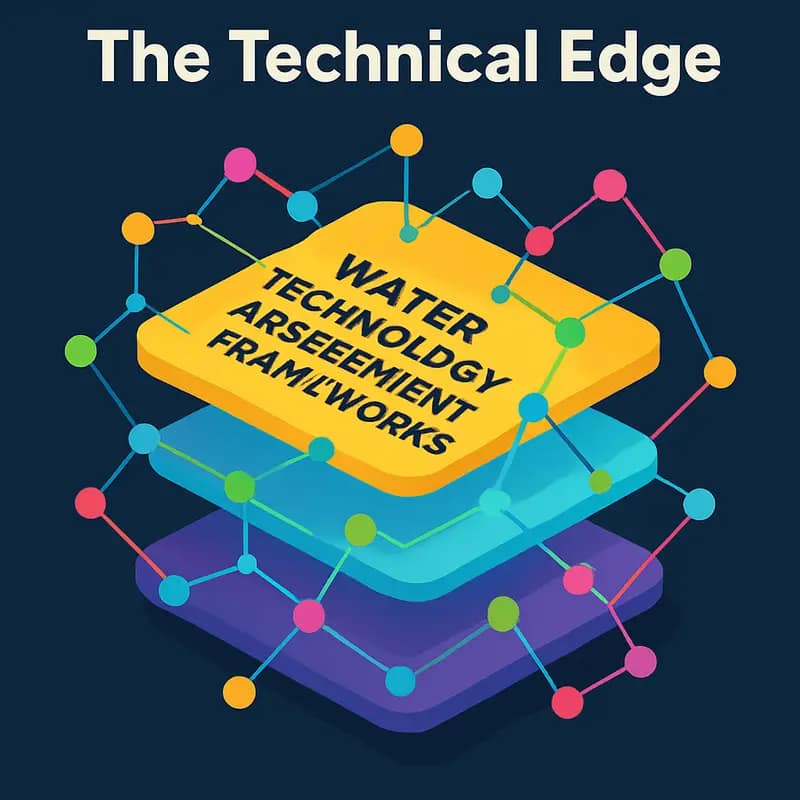
Craft Ventures’ approach to evaluating water technology investments stands out through their rigorous technical assessment framework. At its core lies a three-dimensional evaluation matrix that weighs technological innovation against market readiness and implementation feasibility.
The fund’s technical experts dive deep into the fundamental science behind each water solution, scrutinizing not just the novelty of the approach but its theoretical maximum efficiency. This analysis helps identify technologies that aren’t just marginally better than existing solutions but represent genuine breakthrough potential. For instance, when examining water treatment technologies, they assess both the thermodynamic limits and the practical engineering constraints that could impact scaled deployment.
Craft’s framework places particular emphasis on scalability vectors – the technical factors that enable or limit a solution’s growth potential. These include energy intensity, chemical consumption, maintenance requirements, and operational complexity. Solutions that demonstrate elegant simplicity while delivering superior performance tend to score higher in their assessment matrix.
What truly distinguishes their approach is the integration of implementation feasibility metrics with pure technical evaluation. While many venture funds focus primarily on technical specifications, Craft’s framework examines how the technology will perform in real-world conditions. This includes assessing factors like operational resilience, maintenance requirements, and integration compatibility with existing infrastructure.
The fund has developed a proprietary scoring system that assigns weighted values to different technical attributes based on their impact on commercial success. This system helps quantify the often subjective aspects of technical evaluation, enabling more objective comparison between different investment opportunities. Key metrics include energy efficiency ratios, treatment effectiveness across varying input conditions, and operational stability indicators.
Perhaps most notably, Craft Ventures’ technical evaluation framework emphasizes the interconnected nature of water technology innovations. Rather than viewing solutions in isolation, they assess how new technologies might complement or disrupt existing treatment trains and operational workflows. This systems-thinking approach helps identify opportunities that might be overlooked by more traditional evaluation methods.
This comprehensive technical assessment methodology aligns perfectly with the broader industry need for practical innovation, ensuring that promising technologies don’t just work in the lab but can deliver real impact in the field. Through this approach, Craft has built a portfolio of water technologies that balance breakthrough potential with practical implementability.
Impact Metrics Reinvented
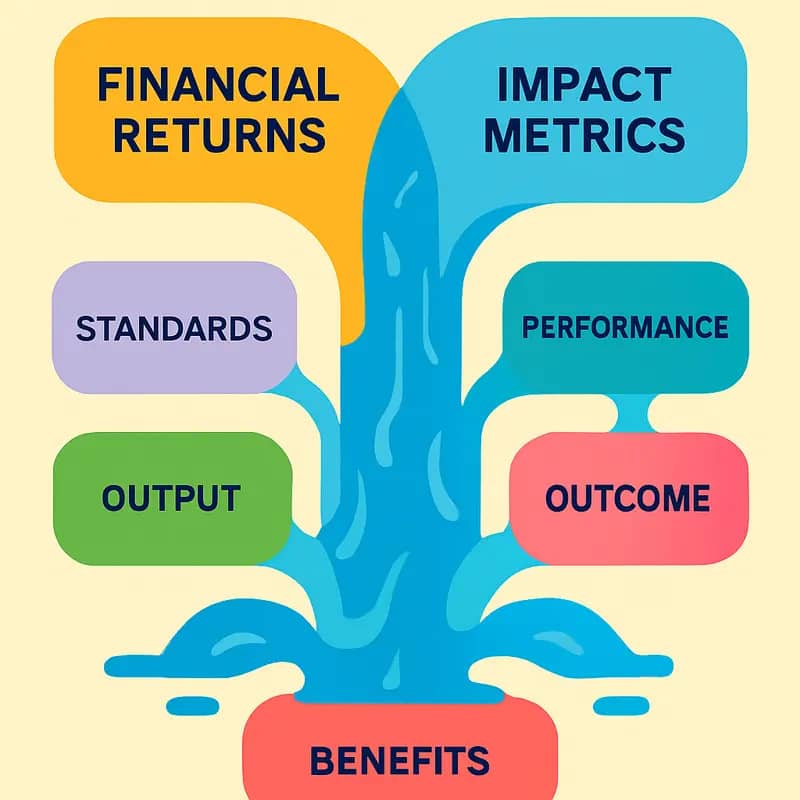
Craft Ventures has fundamentally reshaped how the water technology sector measures success by pioneering a dual-impact framework that bridges the gap between financial returns and environmental outcomes. Their approach recognizes that water innovations must deliver both tangible business value and measurable ecological benefits to achieve lasting impact.
At the core of their methodology is a sophisticated matrix that weights traditional metrics like revenue growth and market penetration against quantifiable environmental indicators. These include cubic meters of water saved, kilowatt-hours reduced, and contamination levels decreased. This balanced scorecard enables investment decisions that optimize for both commercial viability and sustainability impact.
What sets Craft’s framework apart is its emphasis on full-cycle assessment. Rather than focusing solely on immediate outcomes, they track long-term ripple effects across the entire water ecosystem. For instance, when evaluating water reuse technologies, they measure not just direct water savings but also analyze reduced strain on municipal infrastructure, decreased energy consumption from pumping and treatment, and positive impacts on local watershed health.
The fund has also pioneered the integration of social impact metrics into their evaluation process, recognizing that water technology investments can drive significant community benefits. Their framework tracks metrics like improved water access in underserved areas, public health improvements from enhanced water quality, and job creation in the water sector.
To ensure rigorous measurement, Craft has developed standardized protocols for data collection and verification across their portfolio companies. This has created unprecedented transparency and accountability in impact reporting, while also generating valuable benchmarking data that helps optimize future investments.
Perhaps most significantly, Craft’s approach has demonstrated that environmental impact and financial returns are not mutually exclusive. Their portfolio companies consistently show that solutions delivering the highest environmental benefits often generate superior financial performance, as they address critical market needs while building long-term resilience.
This reimagining of impact metrics has influenced the broader venture capital ecosystem, encouraging other funds to adopt more holistic evaluation frameworks. It has also helped portfolio companies better articulate their value proposition to customers and stakeholders, accelerating the adoption of innovative water technologies.
Portfolio Synergies
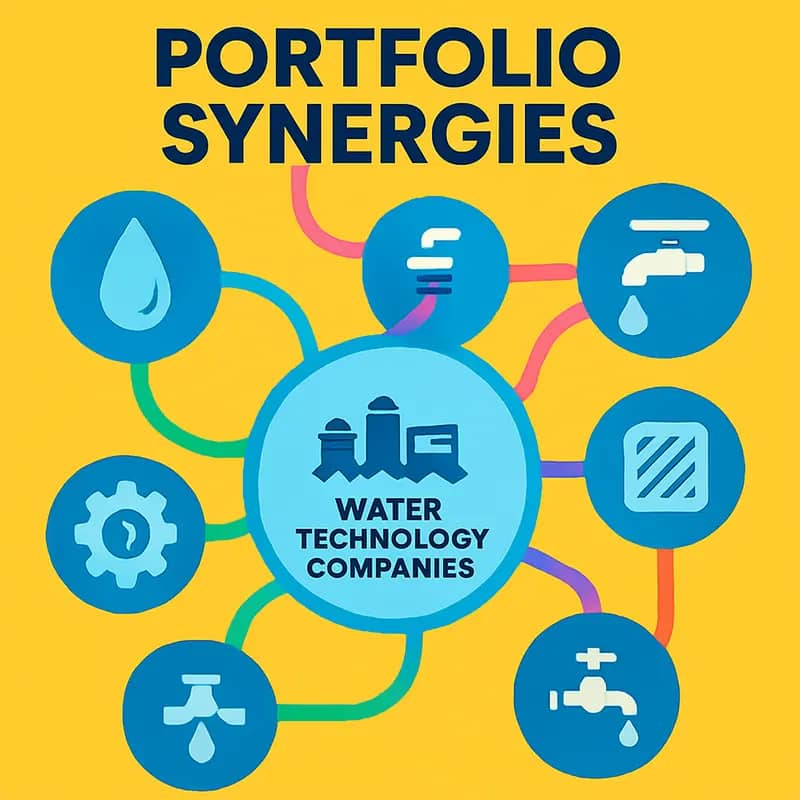
At the core of Craft Ventures’ water innovation strategy lies a sophisticated approach to portfolio synergy development. Moving beyond traditional silos, the fund actively orchestrates connections between its water technology investments, creating powerful collaborative ecosystems that amplify individual company strengths.
The fund’s portfolio companies frequently engage in cross-pollination of ideas and technologies through structured innovation forums. These collaborations have yielded breakthrough developments in areas like water quality monitoring, treatment processes, and infrastructure optimization. For instance, sensor technology from one portfolio company has been integrated with predictive analytics platforms from another, resulting in more comprehensive water management solutions.
Craft Ventures takes a systematic approach to fostering these connections. Their dedicated technology transfer team identifies complementary capabilities across portfolio companies and facilitates strategic partnerships. This approach has proven particularly valuable in addressing complex water challenges that require multi-faceted solutions.
A distinctive aspect of Craft’s strategy is their emphasis on market access synergies. Portfolio companies with established market presence often become commercial pathways for emerging technologies, significantly reducing time-to-market for innovative solutions. This approach has been particularly effective in helping early-stage companies navigate the traditionally conservative water sector.
The fund’s ecosystem extends beyond direct portfolio companies to include research institutions, industry bodies, and regulatory agencies. These broader connections create a fertile ground for innovation while ensuring solutions align with real-world needs and compliance requirements.
Operational efficiencies represent another crucial dimension of portfolio synergies. Shared resources, combined procurement power, and joint research initiatives enable portfolio companies to achieve economies of scale typically reserved for larger organizations. This operational leverage has proven especially valuable for capital-intensive water technology developments.
Linking to how to leverage water risk assessment to unlock business opportunities, Craft’s portfolio companies collaborate to develop comprehensive risk mitigation strategies that address both technical and market challenges. This collective approach to risk management has become a significant competitive advantage.
The synergistic effects extend to talent development and knowledge sharing. Regular rotation of technical experts and executives across portfolio companies ensures the cross-pollination of best practices and accelerates professional development. This human capital strategy has created a dynamic talent pool specifically attuned to water technology innovation.
As environmental challenges grow more complex, these carefully cultivated portfolio synergies position Craft Ventures’ companies to deliver increasingly sophisticated and effective water solutions. The collaborative ecosystem they’ve built serves as a model for how strategic investment can catalyze technological advancement in the water sector.
Future Forward

Craft Ventures’ vision for water technology investment centers on transformative solutions that address mounting global water challenges while delivering substantial returns. Their strategic focus encompasses three key pillars that will likely shape water innovation’s trajectory.
First, the fund recognizes decentralized water treatment as a crucial growth vector. As urban populations swell and infrastructure strains, point-of-use and distributed systems offer compelling economics and enhanced resilience. Rather than replacing centralized infrastructure entirely, Craft envisions a hybrid future where decentralized solutions complement existing systems.
Data analytics and artificial intelligence represent another strategic priority. The fund sees immense potential in solutions that leverage advanced analytics to optimize water network operations, predict maintenance needs, and enable dynamic pricing models. By connecting previously siloed water data streams, these technologies can unlock new efficiencies and revenue opportunities across the water sector.
Perhaps most notably, Craft Ventures emphasizes water technology’s role in broader sustainability transformations. They recognize that water sits at the nexus of climate adaptation, energy transition, and circular economy initiatives. This positions innovative water solutions as enablers of system-wide transformation rather than isolated improvements.
The fund’s investment thesis aligns with an understanding that water technology commercialization requires unique approaches and timelines. Rather than pursuing rapid scaling at all costs, they advocate for measured growth that allows proper technology validation and market development.
Looking ahead, Craft Ventures anticipates increasing convergence between water technology and adjacent sectors like energy, agriculture, and materials science. This creates opportunities for water innovations that deliver multiple benefits across traditionally separate domains. Their portfolio strategy reflects this systems thinking approach, prioritizing solutions that can drive change beyond conventional water industry boundaries.
The fund’s future vision also encompasses evolving business models, particularly technology-enabled services that reduce capital barriers and accelerate adoption. By combining innovative financing approaches with proven technologies, these models can help bridge the persistent gap between water innovation and implementation.
Ultimately, Craft Ventures sees water technology investment as both an imperative and an opportunity. Their strategic priorities reflect a nuanced understanding of water’s unique challenges while maintaining focus on scalable solutions that can generate meaningful financial and environmental returns.
Final words
While Craft Ventures hasn’t historically focused on water technology investments, their approach to scaling transformative companies offers valuable insights for the water sector. Their emphasis on founder-driven growth, strategic capital deployment, and operational excellence presents a compelling framework for water entrepreneurs seeking to scale their innovations. The firm’s substantial dry powder and proven track record in technology scaling could potentially signal a future intersection with water innovation, especially as climate and water challenges drive increased attention to the sector. For water entrepreneurs and impact investors, understanding and adopting elements of Craft’s playbook – from their strategic co-investment approach to their founder-centric philosophy – could prove invaluable in building the next generation of water technology champions. The key lies in adapting these lessons while acknowledging the unique characteristics and challenges of the water sector.
Wanna explore the Full List of Water Investors that cut at least two checks over the past decade? Check it out and bookmark it, I update it regularly!
Learn more: https://dww.show/the-ultimate-water-investor-database/
About us
Through my “(don’t) Waste Water” platform, I offer unique and insightful coverage of the water industry that combines technical expertise with engaging storytelling. If you haven’t yet, it might be time for you to subscribe to the podcast, the youtube channel and/or the newsletter!
